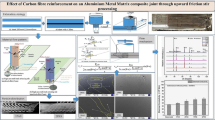Abstract
Based on magnetorheological (MR) fluid, a viscoplastic cluster MR effect pad was formed between the surface of the polishing plate and workpiece. Then an accommodate-sinking effect (AS effect) of MR effect pad on abrasives was presented. A set of experiments were conducted by adding the rogue particles to polish the damage-free K9 glasses and to study the influence of the rogue particles and carbonyl iron particles (CIPs), and the machining parameters on AS effect. The surface roughness of the machined surface was measured and adopted as the parameter of evaluating the AS effect, and a Keyence VHX-600 microscope was used to investigate the machined surface. Experimental results indicated that when the size and concentration of rogue particles were no more than the threshold value, a well AS effect on abrasives aided in obtaining a super smooth surface. The maximal contribution was made by a machining gap on AS effect, followed by the rotational speeds of workpiece and polishing plate, while the least contribution was from the flow rate of MR fluid. The recommended machining parameters for obtaining a super smooth surface (Ra 1.4 nm, Rv 4.6 nm) are a machining gap of 1.2 mm, rotational speeds of 60 and 350 rpm for polishing plate and workpiece respectively, and MR fluid flow rate of 1,000 ml/min.
Similar content being viewed by others
References
Jain V K. Advance Machining Process [M]. Allied, New Delhi, 2009.
Sidpara A, Jain VK (2011) Effect of fluid composition on nanofinishing of single-crystal silicon by magnetic field-assisted finishing process. Int J Adv Manuf Technol 55(1–4):243–252
Zhao P, Wang ZW, Yuan JL (2011) Analysis for ‘trap’ effect influence factors of semi-fixed abrasive plate. China Mech Eng 22(20):2399–2403
Yuan JL, Wang ZW, Qian M, Yu DQ (2009) Particle flow simulation on the influences of property parameters of semi-fixed abrasive plate on its ‘trap’ effect. Adv Mater Res 832(69):1–5
Xie Y, Bhushan B (1996) Effects of particle size polishing pad and contact pressure in free abrasive polishing. Wear 200(1):281–295
Suratwala T, Steele R, Feit MD, Wong L, Miller P, Menapace J, Davis P (2008) Effect of rogue particles on the sub-surface damage of fused silica during grinding/polishing. J Non-Cryst Solids 354(18):2023–2037
Tian Y, Zhong Z, Ng JH (2013) Effects of chemical slurries on fixed abrasive chemical-mechanical polishing of optical silicon substrates. Int J Precis Eng Manuf 14(8):447–1454
Basim GB, Adler JJ, Mahajan U, Singh RK, Moudgil BM (2000) Effect of particle size of chemical mechanical polishing slurries for enhanced polishing with minimal defects. J Electrochem Soc 147(9):3523–3528
Seo YJ, Kim SY, Choi YO, Oh YT, Lee WS (2004) Effects of slurry filter size on the chemical mechanical polishing (CMP) defect density. Mater Lett 58(15):2091–2095
Yuan JL, Wang ZW, Hong T, Deng QF, Wen DH, Lv BH (2009) A semi-fixed abrasive machining technique. J Micromech Microeng 19(5):1–7
Kordonski WI, Jacobs SD (1996) Magnetorheological finishing. Int J Mod Phys B 10(23n24):2837–2848
Das M, Jain VK, Ghoshdastidar PS (2012) Nanofinishing of flat workpieces using rotational–magnetorheological abrasive flow finishing (R-MRAFF) process. Int J Adv Manuf Technol 62(1–4):405–420
Sidpara A, Jain VK (2011) Experimental investigations into forces during magnetorheological fluid based finishing process. Int J Mach Tools Manuf 51(4):358–362
Yan QS, Yan JW, Lu JB, Gao WQ (2010) Ultra smooth planarization technique based on the cluster magnetorheological effect. Adv Mater Rsearch 35:18–23
Li M, Yan QS, Lu JB, Chai JF (2011) Study on compound machining of polyurethane polishing pad and cluster abrasive brush based on MR effect. Key Eng Mater 487:238–242
Bai ZW, Yan QS et al (2014) Advanced nano-finishing process of SrTiO3 substrate by cluster MR-effect plate. Mater Sci Forum 770:150–154
Wu ZC, Yan QS, Bai ZW, Kong LY, Chai JF (2011) Ultra smooth polishing research based on the cluster magnetorheological effect. Key Eng Mater 487:283–288
Bai ZW, Yan QS, Lu JB, Xu XP (2014) Research on abrasive accommodate-sinking effect of cluster MR-effect polishing pad. China Mech Eng 12:1330–1334
Sidpara A, Jain VK (2012) Theoretical analysis of forces in magnetorheological fluid based finishing process. Int J Mech Sci 56(1):50–59
Yang WH, Tarng YS (1998) Design optimization of cutting parameters for turning operations based on the Taguchi method. J Mater Process Technol 84(1):122–129
Author information
Authors and Affiliations
Corresponding author
Rights and permissions
About this article
Cite this article
Bai, Z., Yan, Q., Lu, J. et al. Parametric investigation into accommodate-sinking effect of cluster magnetorheological effect pad. Int J Adv Manuf Technol 75, 1447–1456 (2014). https://doi.org/10.1007/s00170-014-6239-z
Received:
Accepted:
Published:
Issue Date:
DOI: https://doi.org/10.1007/s00170-014-6239-z




